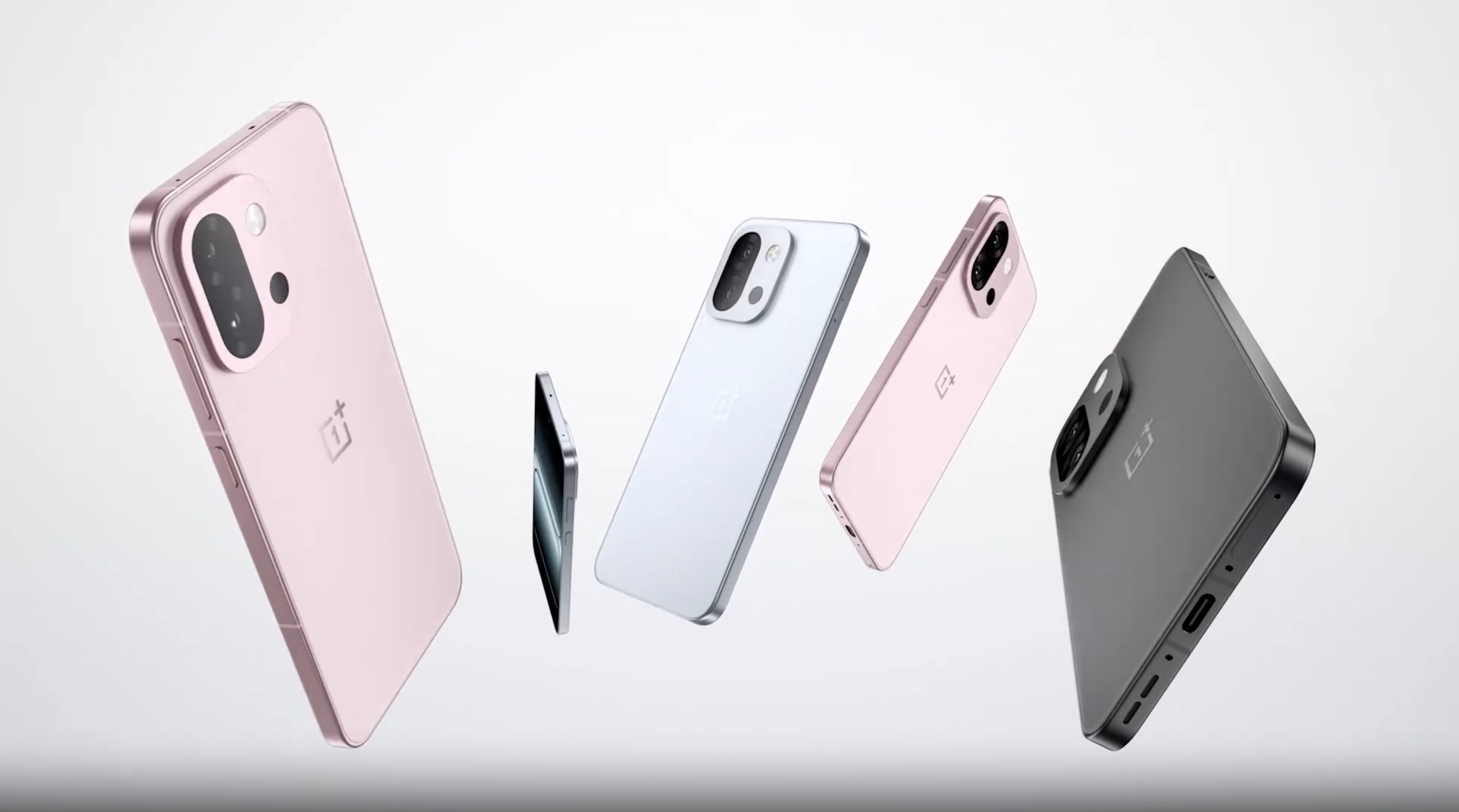Tom's Guide Verdict
A bright, big display; decent performance; and above-average battery life keep the $199 Moto G4 near the front of the budget-smartphone pack.
Pros
- +
Attractive price tag
- +
Bright display
- +
Above-average battery life
- +
Good overall performance for a budget phone
Cons
- -
Previous versions offered stronger water resistance
- -
Struggles with multitasking
- -
Camera can't handle low lighting
Why you can trust Tom's Guide
After acquiring Motorola, Lenovo hopes that bigger means better with the fourth generation of the Moto G. In many ways, it is. The $199 smartphone has a lot of pros, including a bright, bold display and peppier overall performance. But those improvements only go so far — the camera in the Moto G4 is a little disappointing, especially when compared to the one on the more expensive Moto G4 Plus. But the latest version of the Moto remains a compelling budget buy even if it's not as compact as before.
Lightweight and low-grade materials
The fourth-generation Moto G is taller and wider than its 2015 predecessor, all in the name of accommodating a larger display. But the G4 is thinner than before: Even at its thickest point, the G4 is just 0.39 inches thin, compared with the previous generation's 0.45 inches. Even with the larger size, the new Moto G hasn't put on much weight: It's just 5.47 ounces, just a tad heavier than last year's model, which weighed 5.45 ounces.
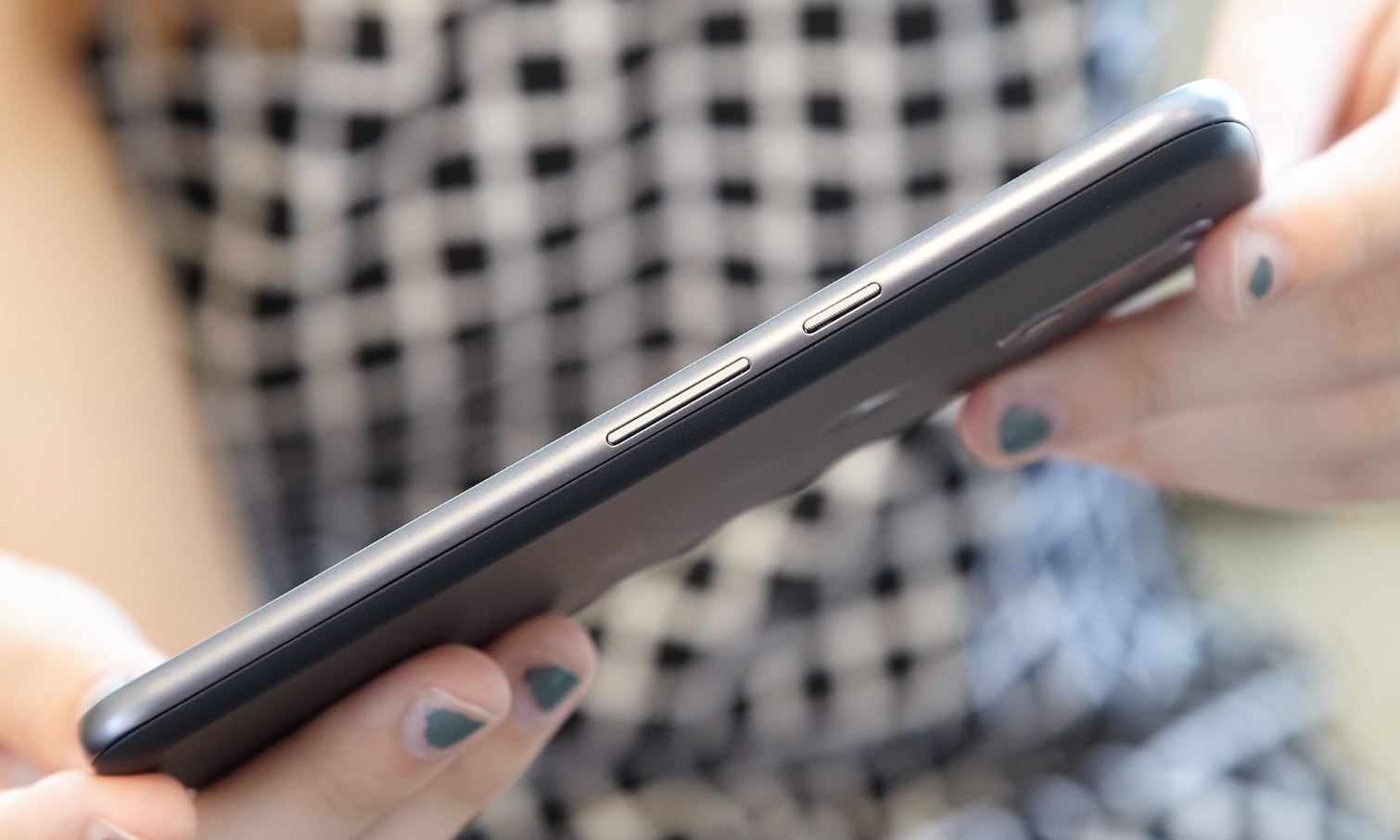
There's one change to the Moto G that won't be welcome to some users: Whereas last year's model could survive a dip in water up to 1 meter (about 3 feet) deep for 30 minutes, the G4 is only water-repellent, meaning it will survive spills or splashes but not a full-blown dunk into water.
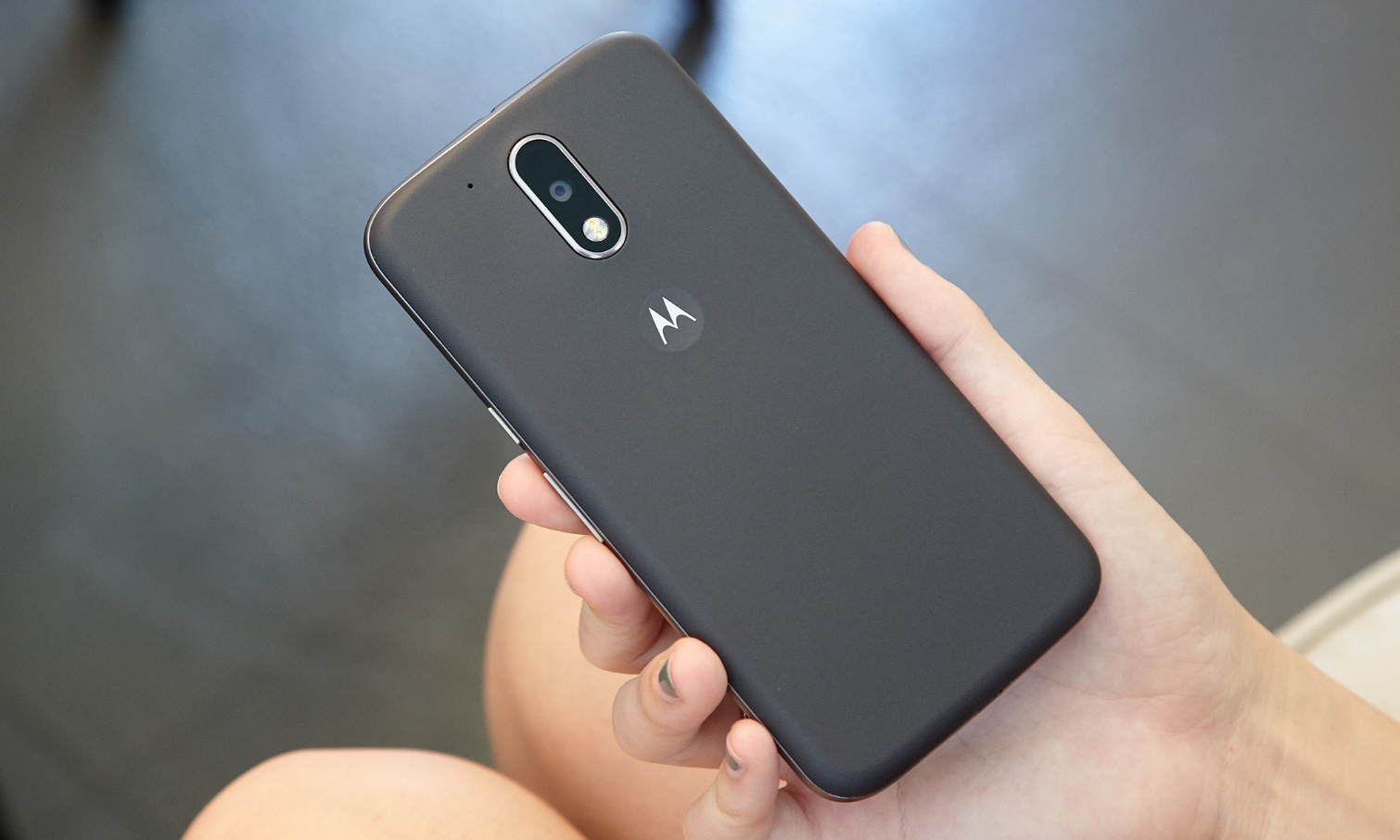
The front of the Moto G4 doesn't scream "budget phone." Its all-black touch screen appears especially seamless and reflective. Only when you hold the phone and feel its textured plastic backing, especially when you notice how easily the backing picks up smudges, do you really get a sense that this is a budget device. I wish the new Moto G took a little more after the similarly priced Huawei Honor 5X, which features a sleek, brushed-metal backing.
Specs
Carrier: Unlocked
Phone Display Size: 5.5 inches
Display Resolution: 1920 x 1028
OS: Android 6.0.1 Marshmallow
CPU: Snapdragon 617 octa-core processor
RAM: 2GB
Storage: 16GB
Memory Expansion Type: microSD, up to 128GB
Bluetooth Type: Bluetooth 4.2 LE
Wi-Fi: 802.11 a/b/g/n
Weight: 5.45 ounces
Pretty display for a low price
Lenovo expanded the size of the Moto G's screen, from 5 inches on last year's model to 5.5 inches on the G4. The decision may disappoint fans of smaller phones, but it's one that pays off, especially as far as brightness and clarity go. The G4's 1920 x 1080 screen was vivid — an especially important factor during those lengthy Pokémon Go sessions.
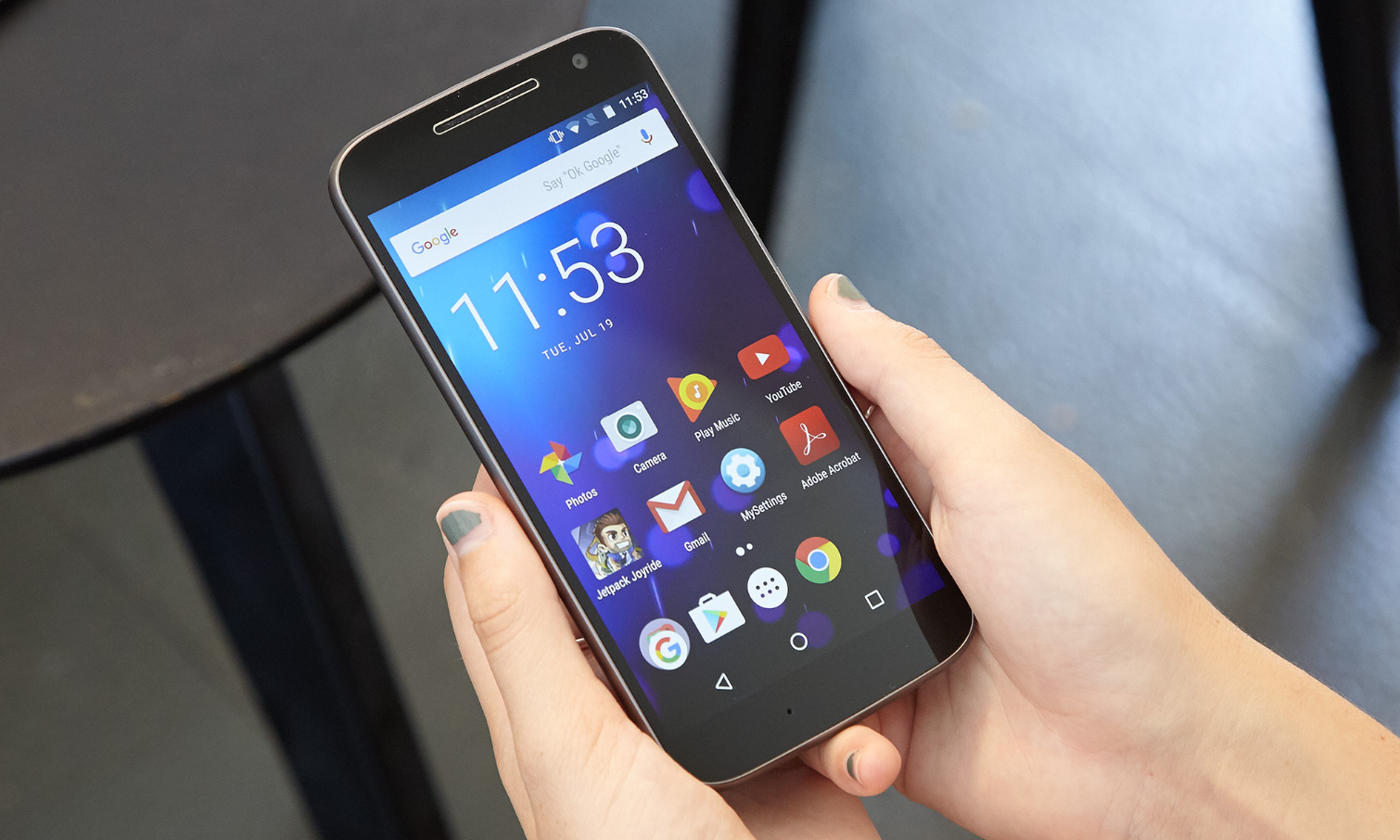
Using our light meter, we measured the G4's display at 491 nits of brightness. That's an improvement over the previous Moto G (463 nits) and better than the average for smartphones (441). Still, the comparably priced Honor 5X and Nuu Mobile X4 are brighter, at 529 nits and 618 nits, respectively.
MORE: Best Smartphones on the Market Now
The G4 shows off a wide range of colors, scoring 110.4 percent on the sRGB color gamut scale, though that's below the 132.6 percent smartphone average. I didn't have any difficulty seeing the bright reds, blues and yellows, even as I threw Poké Balls in direct sunlight. As vibrant as the Moto G4's colors are, they're not always accurate. The phone notched a Delta-E score of 2.3. (Numbers closer to 0 are better.) While better than the average smartphone's score of 4.4, it's a step down from the color accuracy of the previous Moto G (0.85). At least the G4 topped other leading budget phones, such as the Honor 5X (3.52) and the OnePlus X (2.95).
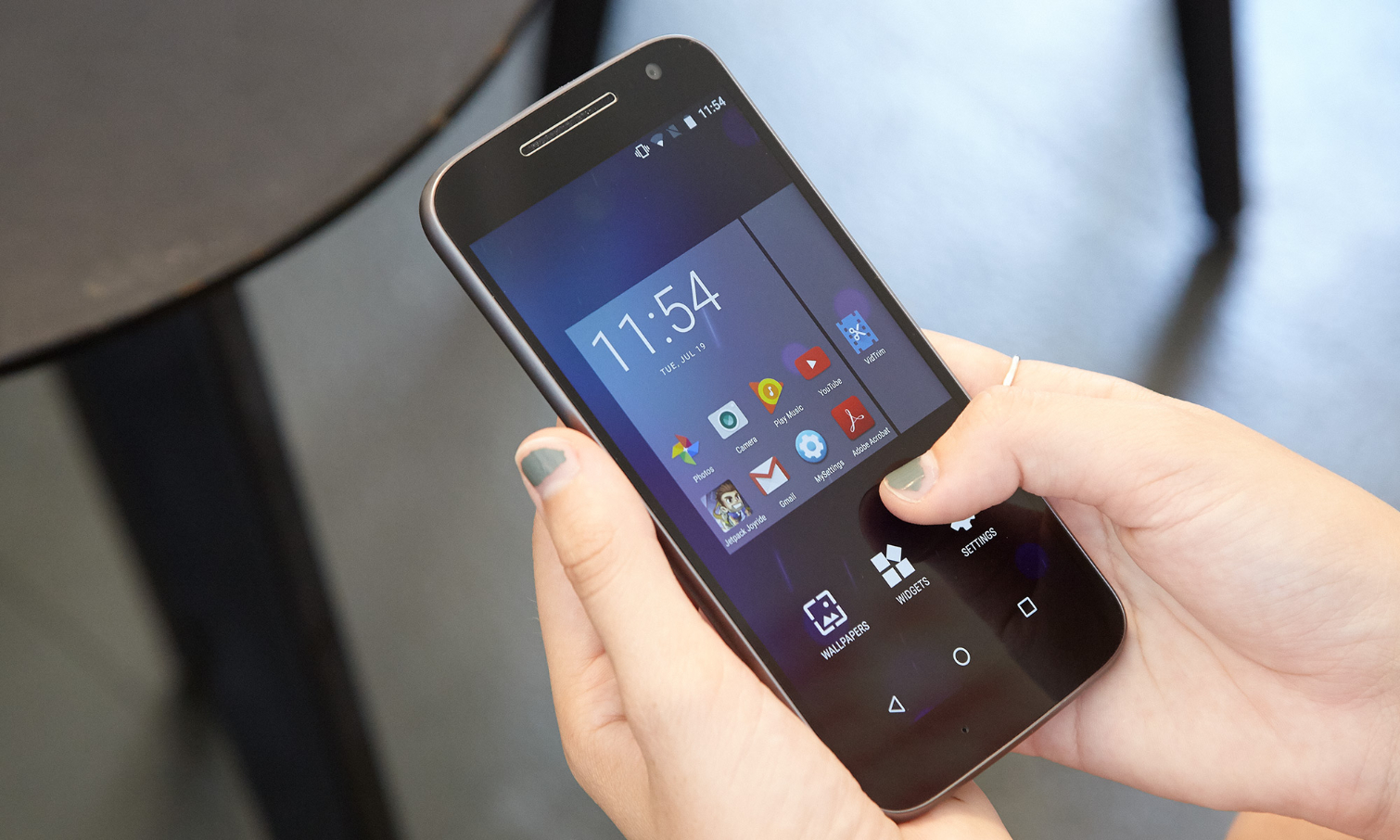
Listening to music through the G4's external speakers wasn't a problem. In fact, the phone stood up to a pretty rigorous shower-karaoke test. It has two small external speakers that blasted sound loudly enough for me to sing along loudly to Ariana Grande's "Into You," without the audio sounding canned or muffled.
Solid performance for a lower price
Low-priced phones often sacrifice on the processor, figuring bargain hunters will be willing to live with pokey performance if it means a lower price tag. Moto's G4 defies expectations here: While its 1.5-GHz Snapdragon 617 octa-core CPU isn't going to set any speed records, it will make the phone seem snappier compared to its low-cost counterparts.
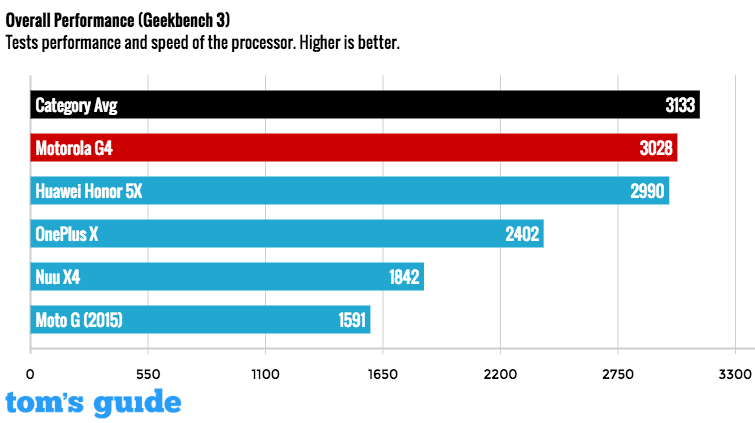
On the Geekbench 3 test measuring overall performance, the Moto G scored 3,028. That's not far off from the average for smartphones (3,133), and it's a vast improvement over the previos-generation Moto G, which came in at 1,591. More important, the G4 outperforms other phones in its class, including the Nuu Mobile X4 (1,842), the OnePlus X (2,402) and the Huawei Honor 5X (2,990).
MORE: The Best Cellphone Plans for Families and Individuals
For our video-editing test, which involves converting a 204MB video from 1080p to 480p, the Moto G4 finished in 8 minutes. While that's slower than the Honor 5X (7:41), it's a slight improvement from the 2015 Moto G, which finished in 8 minutes and 24 seconds.
In everyday use of the phone, I noticed that running multiple apps could cause some sluggishness. I ran 12 apps at once while streaming music and occasionally noticed a lag as I switched between apps.

The G4's graphics performance was less impressive in our tests. The G4 turned in a score of 9,719 in the 3DMark Ice Storm Unlimited Test. While that's well ahead of last year's Moto G (4,467), the Honor 5X (7,792) and the Nuu Mobile X4 (4,808), the G4's score badly trailed the average smartphone's score as well as the OnePlus X.
Battery life holds steady
A long-lasting battery helped last year's Moto G vault to the top of our recommendations. Considering that Lenovo boosted the power pack on this year's model to a 3,000-mAh battery (up from 2,470 mAh in the older Moto G), we hoped to see an improvement in the Tom's Guide battery test, which consists of web surfing over AT&T's LTE network at 150 nits of brightness.
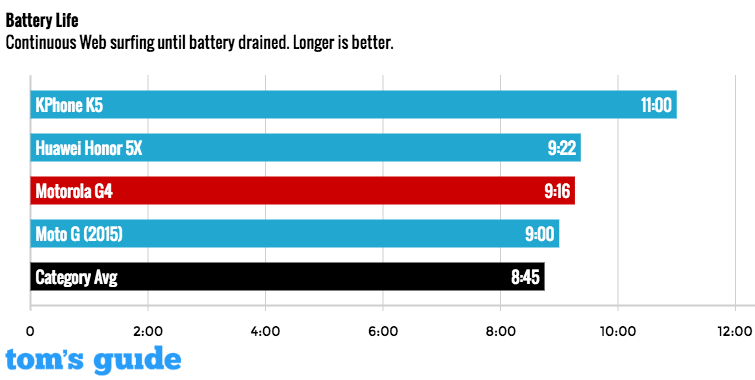
The bigger battery meant a modest gain in battery life — 9 hours and 16 minutes on this year's G4 compared with 9 hours flat on last year's model. That's also consistent with the 9:16 result we recorded with the G4 Plus, and ahead of the average smartphone's time of 8:35.
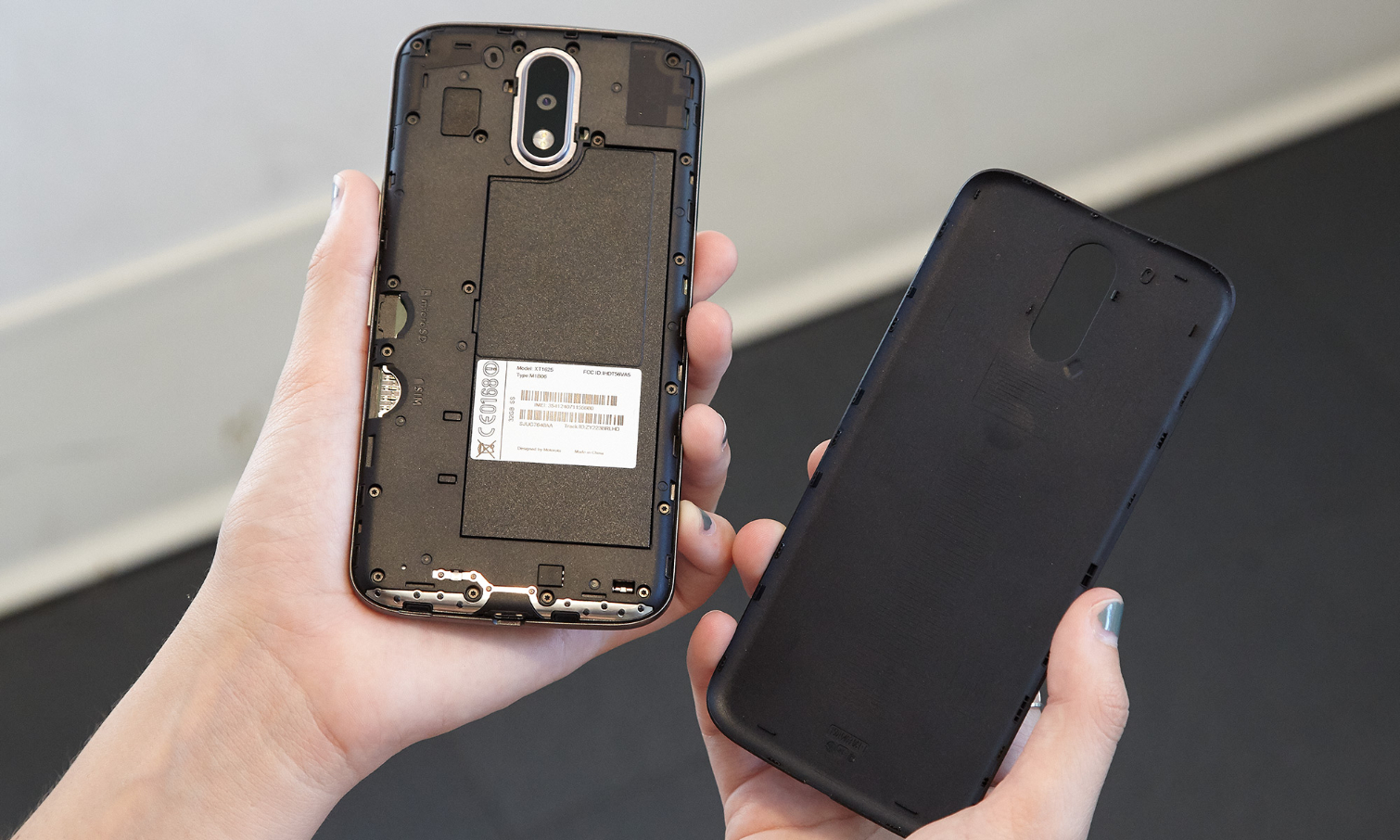
That time was just a few ticks behind the 9:25 time turned in by the Honor 5X. However, the similarly priced KPhone K5 lasted much longer, enduring for 11 hours. As solid as the Moto G4's battery life is — it will certainly get you through the day on a single charge — long-lasting budget phones are becoming more commonplace.
MORE: Smartphones with the Longest Battery Life
The G4's claim to fame is the Turbopower charging system, which amps up the 3,000-mAh battery to provide "up to 6 hours of power in just 15 minutes of charging," according to Motorola. After 15 minutes of charging the G4, I saw the battery percentage jump from 0 to 39 percent.
Average cameras miss the mark in low light
Though it sports a 13-megapixel camera on its back, the G4 doesn't deliver great photos unless the conditions are ideal. When the lighting is great, so is your photo. In low light, it's a different story.
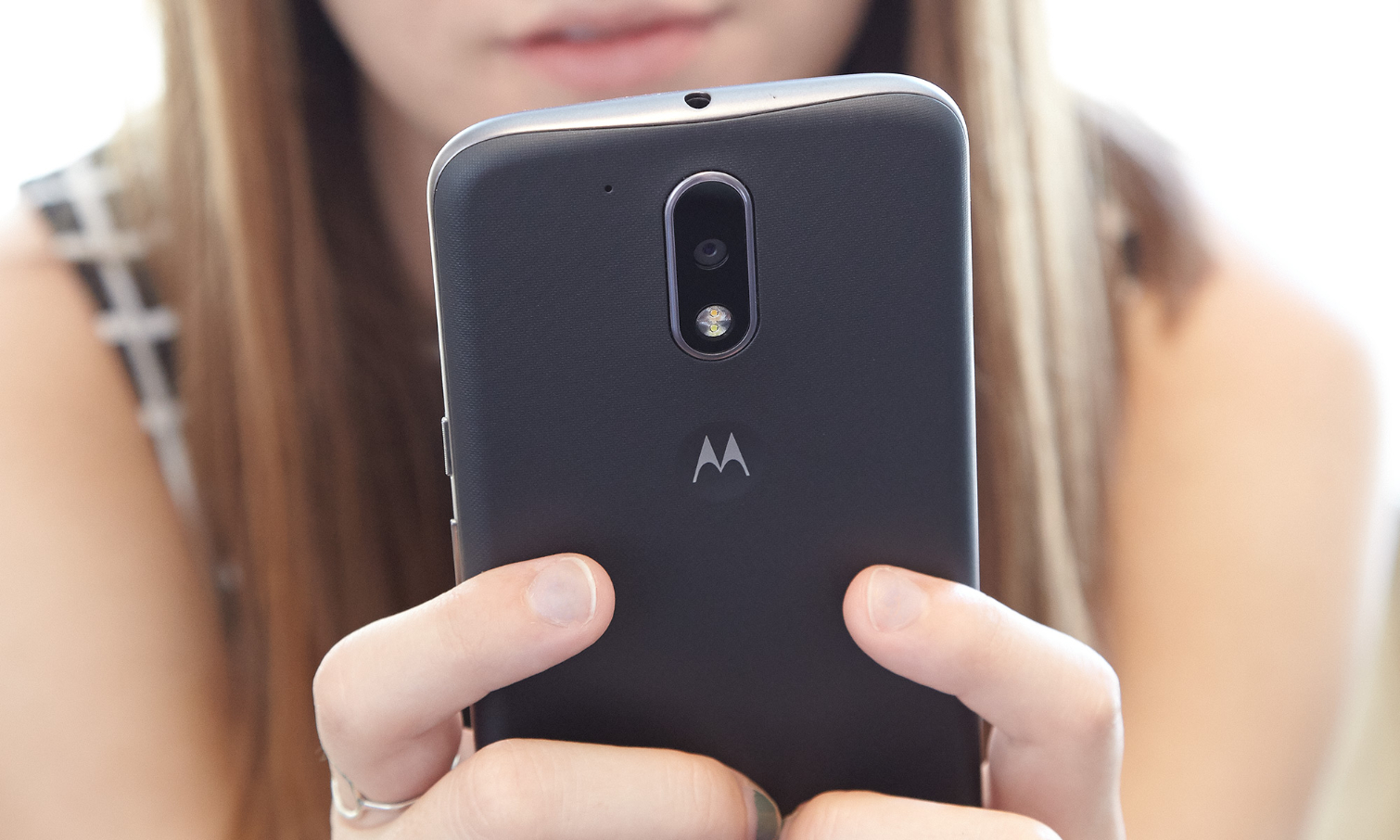
Consider a photo I took overlooking our office rooftop on a bright, clear day. The shot looks sharp and vibrant. In comparison, the iPhone 6s captured minute details and had better color accuracy, thanks to its 1.22-micron pixels, even though that phone's shooter is only 12 MP. Nonetheless, the Moto G4 took a comparable shot — and it's much less expensive than the iPhone 6s.

However, like the werewolf of budget phones, the G4's camera quality gets quite a bit hairier and a lot less cute after the sun goes down. Photos I took of my roommates in low lighting looked grainy and blotchy, and turning on the rear camera's flash didn't make much of a difference.

The 5-MP front camera on the G4 works well, again with its best results coming when used in bright daytime lighting that isn't too harsh or too dim. Selfies I took on a very bright, very windy day didn't differ too much from similar shots taken with an iPhone 6s, except in color accuracy.

Selfies in low lighting weren't great, unsurprisingly. The previously sharp front camera quickly lost its ability to capture detail when it was not in direct sunlight.

The same lighting issues apply to the G4's video capabilities, which were passable but not impressive. The phone captured 1080p HD video of movement and colors fairly well as I shot from the window of a moving train, but there was a noticeable lag in the time it took the video to focus, and quite a bit of pixelation, especially when I tried to zoom.
Standard Android adds Interactive touch and voice recognition
The G4 runs on standard Android 6.0.1 Marshmallow, which looks clean and makes navigation as intuitive as possible, with zero bloatware. The on-screen home, back and tab buttons appear on screen when the phone is active.
The G4 improves Moto Display to recognize and react to gestures as well as vocal commands powered by "OK, Google" directions. A quick turn of the wrist will give you access to the camera, though you may have to try three or four times before you get the hang of the movements that the phone responds to best. If the G4 has been sitting idly, a slight nudge will light up the home screen and show you any notifications you've missed.
Bottom Line
If you wanted more bang for your 200 bucks, the fourth-generation Moto G certainly delivers an impressive display and solid performance for a low-cost phone. But budget-minded shoppers who also want a phone that can double as a camera may want to pony up the extra $50 for the Moto G4 Plus and its more powerful rear camera.
The budget-phone segment is becoming increasingly competitive, with a number of sub-$200 phones now offering long battery life, increased durability or some combination of attractive features. Lenovo's enhancements to the Moto G4 keep that phone near the front of the budget pack.
Lauren L'Amie is an SEO Content Strategist at Wirecutter, and was previously an editor for Tom's Guide, writing mainly about phones and social media. She has also written for Cosmopolitan, New York Magazine, and The Daily Dot, focusing on a range topics from health, sex, and lifestyle to news and politics.
